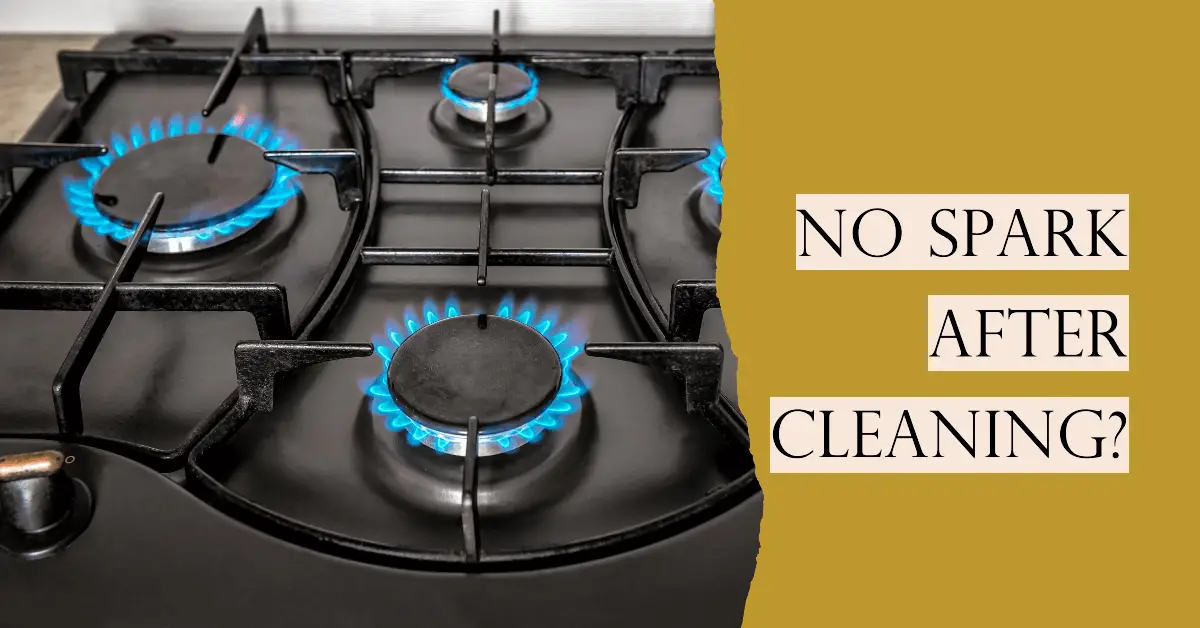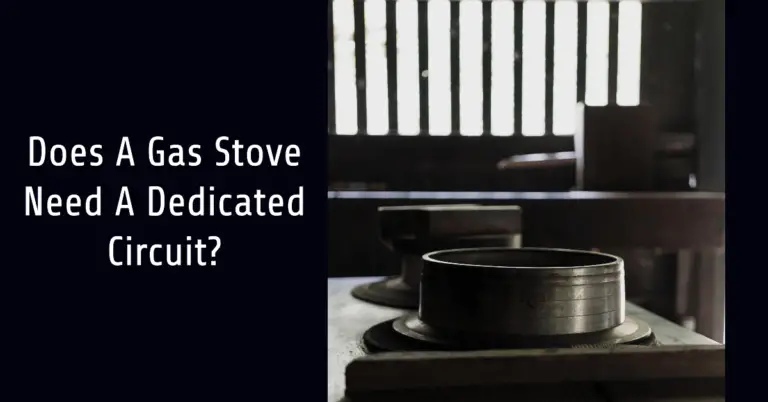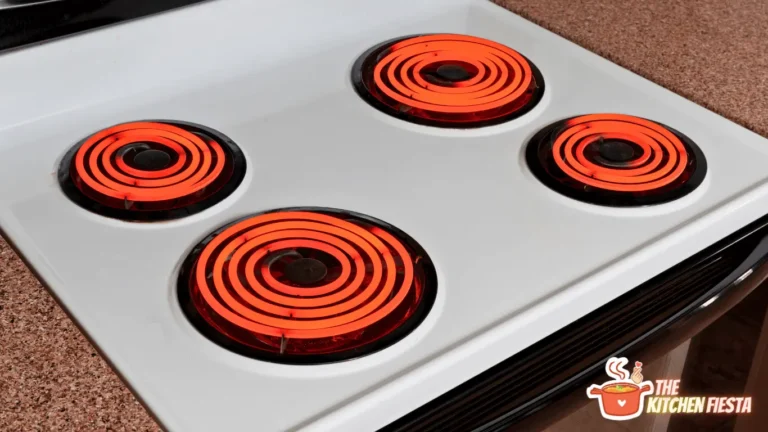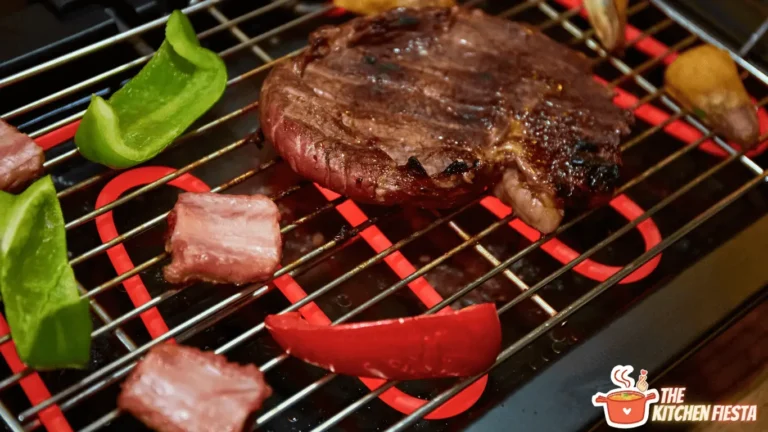Why Your Gas Stove Igniter Isn’t Sparking After Cleaning (And How To Fix It)

Have you ever cleaned your gas stove burners and igniter, only to find the igniter won’t spark afterwards? This frustrating issue is common, but there are ways to diagnose and fix it.
A non-sparking igniter prevents your stove from lighting properly. But with some troubleshooting and repair, you can often get your gas stove igniting and working again after cleaning.
In this guide, you’ll learn:
- How the ignition process on a gas stove works
- Common causes of an igniter not sparking
- Steps to diagnose the root cause
- Solutions for a wet igniter after cleaning
- When to replace a faulty igniter
- Step-by-step repair and replacement instructions
- Tips to prevent future igniter problems
Let’s get started with understanding how your stove’s ignition is supposed to work…
How Does The Ignition Process On A Gas Stove Work?
The igniter on your gas stove has an important job – generating a spark to ignite the gas and light the burner.
Here is a simplified breakdown of how appliance ignition works:
- You turn the burner knob to release gas flow
- Electricity flows to the igniter module
- The igniter creates a high-voltage spark
- The spark ignites the gas at the burner ports
- Gas combustion creates a flame for cooking
This process happens in an instant, with a clearly audible “click” sounding from the igniter right before a flame appears.
The igniter itself is a small ceramic or metal tip connected to wiring that runs to an ignition control module. It is positioned close to the burner to create a spark that can jump to the gaseous fuel source.
Without the igniter sparking properly, gas will not ignite on your stove. The burner may release gas odor, but no flame results. Proper diagnosing and repairing of the igniter is needed to get stovetop burners working again.
Common Causes Of A Stove Igniter Not Sparking
If your gas stove igniter is no longer creating a spark, there are a few common culprits to blame.
The most typical reasons an igniter fails to spark are:
- Faulty or failing igniter module – The igniter itself is malfunctioning or broken after prolonged use. This is common as igniters wear out over time.
- Loose or damaged wiring – Connections between the igniter and module are compromised, preventing electricity from flowing properly.
- Moisture buildup – Cleaning burners can introduce water or cleaning agents into the ignition points, preventing sparking until fully dry.
- Clogged burner ports – Debris, food, grease in the burner can block the igniter spark from reaching the gas source.
Pinpointing the exact cause of your non-sparking igniter is important to get the stove working again.
Next, let’s go through some troubleshooting steps to diagnose the problem.
How To Diagnose The Cause Of A Non-Sparking Igniter?
When your gas stove igniter won’t create a spark, some detective work is needed.
Follow these steps to zero in on the cause:
- Check for igniter clicking – Turn on the burner knob and listen closely for a clicking sound coming from the igniter. No click indicates a connectivity issue.
- Inspect wiring – With the stove powered off, examine all visible wiring between the igniter and nearby components. Look for any loose connections, damaged wires, or corrosion.
- Remove the burner cap – Take off the burner grates and cap to expose the base of the igniter and burner ports. Inspect for debris or signs of moisture.
- Check igniter resistance – Use a multimeter to check the ohm reading across the igniter. Out of range resistance indicates a bad igniter that needs replacement.
- Allow components to dry – If moisture is present after cleaning, allow all components to thoroughly dry for 48-72 hours before testing again.
Going through these troubleshooting steps methodically will reveal most common igniter issues. Safety note – always switch off gas and power to the stove before any hands-on diagnosing or repair.
Fixing A Wet Or Moist Igniter After Cleaning
Finding a wet or damp igniter is a likely culprit for reduced sparking power. Cleaning agents and water can temporarily impair igniter function. Here is how to fix a wet igniter:
- Allow the igniter and burner to dry fully over 2-3 days before attempting use. Remaining moisture prevents proper sparking.
- Use compressed air to blow out any moisture lodged in the burner ports or ignition points. Aim air at any openings surrounding the igniter.
- Gently warm components with a hair dryer to expedite drying time. Take care not to overheat the igniter or wiring.
- Check for igniter operation frequently as components dry. Sparking ability should improve steadily.
- Avoid immersing the igniter tip directly in water when cleaning. Use a damp cloth instead. Check for debris clogging the igniter after washing burner caps and grates.
Allowing adequate drying time is crucial for a water-damaged igniter to regain sparking functionality after cleaning. Be patient and do not attempt to use the stove until the system is completely moisture-free.
When To Replace A Faulty or Damaged Igniter?
If drying out a wet igniter does not restore sparking, or if there are signs of physical igniter damage, replacement may be needed.
Here are indicators that the stove igniter itself is faulty and requires replacement:
- Visible cracks in the ceramic igniter tip. This vulnerable area is prone to damage over years of heating and cooling.
- Weak, infrequent or no sparking at all when the burner knob is turned.
- An ohm reading outside the normal operation range. For most igniters, this range is 40-150 ohms.
- Melting or burn marks on the casing and wiring. Exposure to excessive heat can damage the igniter.
- Loose internal wiring contacts causing connectivity issues.
- Corroded or rusted metal contacts unable to conduct properly.
- Old age. The average lifespan of a gas stove igniter is 3-5 years before replacement is needed.
Igniters are inexpensive and easy to replace, restoring instant sparking operation to your burners.
Next we’ll look at the step-by-step process for DIY igniter replacement.
Step-By-Step Igniter Replacement Instructions
With the right igniter replacement part in hand, follow these instructions to safely swap in a new igniter:
Turn Off Gas and Power
- Shut off the gas supply valve to the stove.
- Unplug the appliance from the electrical outlet.
Remove Burner Components
- Lift off grates and burner caps from the affected burner.
- The burner base or head will be anchored by screws, clips or brackets. Remove to fully expose igniter.
Disconnect and Remove Old Igniter
- Unplug the igniter’s wiring harness or disconnect individual spade connectors.
- Unscrew or detach any brackets or fasteners securing the igniter.
- Gently work the old igniter out of the burner cutout.
Install New Igniter
- Align the new igniter into position and secure with fasteners.
- Reconnect wiring plugs or terminals. Ensure a tight fit.
- Replace the burner base, cap, and grates.
Test Operation and Sparking
- Restore gas and power supply.
- Turn the burner knob and listen for igniter clicking.
- If the new igniter sparks repeatedly, ignition is restored!
With the new igniter installed, your gas stove burners should ignite smoothly and reliably when turned on. Enjoy peace of mind knowing sparking issues are resolved.
Preventing Future Igniter Problems
With a properly working igniter that sparks consistently, you want to keep it that way. Here are tips for maintaining longevity of your new or repaired gas stove igniter:
- Allow burners to dry fully for 48-72 hours after cleaning before use. Prevent moisture damage.
- Take care when cleaning around the igniter, avoiding water or cleaners contacting the components.
- Check and tighten igniter wiring connections periodically. Loose contacts can develop over time.
- Consider proactive igniter replacement every 3-5 years to avoid operational failure.
- Clean any debris from burner ports and ignition points to allow proper gas flow.
- Handle ceramic igniter tips gently. Cracks develop easily from physical impact.
- Ensure good gas flow by checking the supply line filters occasionally. Clogs can reduce burner flame.
With proper care, your new stove igniter should provide years of reliable sparking performance.
FAQs About Gas Stove Igniters Not Sparking
Having trouble diagnosing and fixing an igniter that won’t spark? Here are answers to some frequently asked questions:
Why does my gas stove igniter keep failing repeatedly?
Frequent igniter failure usually indicates an underlying issue like improper gas flow or voltage. A faulty control module or bad wiring connections can also damage replacement igniters. Thorough diagnosis and repair is needed to address root causes.
Is it safe to clean my stove igniter with water?
No, you should never clean an igniter directly with water. Moisture causes temporary or permanent damage. Use only a lightly dampened cloth if needed, and thoroughly dry components afterwards.
What is the average lifespan of a gas stove igniter?
Most standard igniters last approximately 3-5 years before requiring replacement. High quality igniters may operate safely for up to 8 years in some cases. Igniters made of more durable ceramic last longer than cheaper wire-based versions.
Can I use my gas stove if the igniter is not sparking?
No, it is not safe to operate a gas stove if the igniter fails to spark. This prevents reliable burner ignition and gas combustion. Repair or replace faulty igniters promptly to restore proper stove functioning. Never override or disable the igniter intentionally.
Conclusion and Summary
Fixing a gas stove igniter that won’t spark after cleaning is usually an easy and inexpensive DIY repair.
Start by diagnosing the root cause – faulty module, wiring issue, or moisture damage. Allowing a wet igniter to dry fully often restores sparking.
If replacement is needed, compatible igniters are readily available. Follow proper installation steps to get your burners igniting safely again.
With some targeted troubleshooting and repair, you can get your finicky gas stove igniter sparking reliably once more. Just be sure to prevent future issues through careful cleaning and maintenance.
I hope this guide gives you confidence to tackle a stubborn stove igniter not sparking problem on your own. Know when professional help is needed, but minor repairs can save the cost and hassle of a service call.
Now you have the knowledge to diagnose issues, fix moisture damage, replace damaged igniters, and keep your gas appliance lighting properly for years to come.






